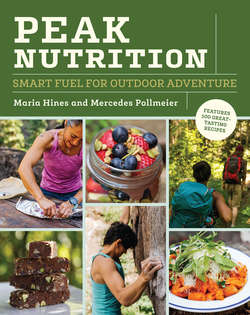Читать книгу Peak Nutrition - Maria Hines - Страница 37
На сайте Литреса книга снята с продажи.
THE AGING BRAIN
ОглавлениеDon’t forget about the brain! Diet and exercise can absolutely help the aging brain, the control center of the body. Here’s how: Decrease inflammation and oxidative stress by decreasing inflammatory foods (these include sugar, processed foods, and any food intolerances) and increasing anti-inflammatory foods (such as omega-3 fatty acids, grass-fed meat, and colorful fruits and veggies). Keep blood glucose levels steady by eating slow-digesting, high-fiber carbs. Often, higher glucose levels increase inflammation in the brain, making thinking difficult. As a side note, some researchers now consider Alzheimer’s to be “type 3” diabetes—basically insulin resistance in the brain—which means it may be preventable.
Move! Move every day. Keep learning new movements and new tasks, and never stop. Novel learning keeps the brain young. Age 30 is also when brain function starts to decline—research has shown that at this age you stop learning new things. You like what you like and avoid what you don’t like. You avoid wanting to look stupid, so you don’t try new things. Try this challenge: Do something new for two weeks and see how you feel—you may surprise yourself! See the Resources section for some fresh ideas on mobility and different movement patterns.
Another important factor for optimal brain health as you age is to make sure that one-third of your daily consumption of unsaturated, monounsaturated, and saturated fats is from whole-food sources. Try to avoid industrial seed oils, such as corn, soybean, safflower, sunflower, and vegetable oil. These have more polyunsaturated fats and are partially hydrogenated, making them trans fats that increase LDL (bad) cholesterol and decrease HDL (good) cholesterol. Increase your consumption of omega-3s (EPA/DHA). This will help to balance out those fatty acids. Consume foods that protect the brain and body from injury and inflammation and that promote memory, learning, and mood. These include:
•Dark chocolate and cocoa
•Green tea
•Colorful berries
•Leafy green vegetables and other colorful fruits and veggies
•Garlic, onions, and other herbs and spices
•Minimal amounts of red wine
